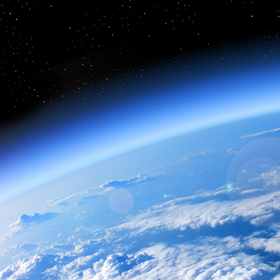Astronomy & Adaptive Optics
Computer controlled deformable mirrors can correct, in real-time, the distortion caused by the turbulence of the Earth’s atmosphere, making the images obtained almost as sharp as those taken in space.
Adaptive optics require a bright reference star that is very close to the object under study.
This reference star is used to measure the blurring caused by the local atmosphere so that the deformable mirror can correct for it. Since suitable stars are not available everywhere in the night sky, astronomers can create an artificial star instead by shining a powerful laser beam into the Earth’s upper atmosphere. Thanks to these laser guide stars, almost the entire sky can now be observed with adaptive optics.
Astronomy
Recent technological changes in Scientific CMOS cameras now permit short exposures to be taken with negligible read out noise, allowing a high-speed stream of images to be captured. This can result in thousands of quick short exposures being saved for post processing.
This technique uses a bright star nearby the object to be observed, and calculation of the Strehl number of the reference star in each image taken. A selection algorithm drops images that fall below the minimum and those images that meet the selection criteria are used and this may be as little as 1% to 10% of the data stream. These selected images are combined by shifting and co-adding the sequence to produce diffraction limited image of the object being observed. The resultant image has been corrected for the turbulence of the atmosphere. This technique has also been called ”LUCKY IMAGING”. Associated techniques are “speckle interferometry”.
We Recommend...
Cooled sCMOS Camera Cooled SWIR Camera

Contact Us
22 Theaklen Drive,
Saint Leonards-on-sea,
TN38 9AZ,
United Kingdom

